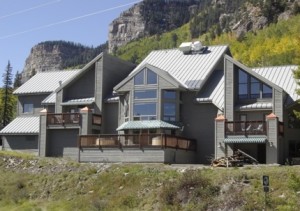
Commercial real estate investors often need alternative financing that does not conform to the standard bank or institutional lender profile. While a handful of institutional lenders do provide bridge or mezzanine financing, the majority are small private firms called hard money lenders.
Temporary Financing Options
Short-term loans considered bridge or hard money loans are mortgages with terms typically between six and 36 months. Monthly payments are typically interest-only with fixed rates starting from between 4% and 12%. Temporary financing options are used to purchase, renovate, season, or sell a property before refinancing to a permanent mortgage at a later date.
Bridge Loans
Bridge loans are short term loans that are used for acquiring and renovating or repositioning a property. Typically these require personal guarantees of the borrower unless they are very low loan to value.
Temporary bridge loans are ideal for things like:
• Seasoning a property
• Increasing the occupancy rate of a property
• Renovating a property
• Getting financing if you don’t meet the stricter qualifications of a permanent loan
• Competing with all-cash buyers
Investors who want short-term financing for properties should plan to be active in the management of their property. They should have at least nine months of cash reserves to cover monthly loan payments through vacancy periods and unforeseen repairs.
Mezzanine Financing or Mezz Debt:
Mezzanine or mezz debt is used to finance a gap between the first mortgage loan and the equity amount contributed by the borrower. Assuming a 75% loan to value first mortgage, a mezzanine lender might provide 10%-15% of the remaining funding with the equity investor providing 10% -15%. Mezzanine debt has higher rates that often include an equity participation or some other type of return enhancement. In simple terms, it is similar to a Second Mortgage, with one large exception, Most often, the collateral is normally not the underlying real estate rather the collateral is most often a pledge of your ownership interests.
For example:
If the ownership is held in a corporation where the owners’ interest in the borrowing entity is held in the form of stock, the stock of the company would be pledged to the Mezzanine Lender. In the event of a default, the Mezzanine lender would foreclose on the stock and take control of the company (and underlying asset). Most of the ownership structures we see are held in a limited liability company. The ownership of these companies is most often held in units. Similarly, like stock, the units would be pledged to the mezzanine lender. As a result, because the mezzanine lender comes in at a higher risk level, their interest rates are higher than the typical first mortgage lender. Therefore, rates for mezzanine loans vary from lender to lender based on the size, risk profile and property type.
Mezzanine Rates:
Common rates for these loans range from 10% to 15% per annum with fees of 1% to 2%, plus closing costs. These lenders and the Senior Lender will most often require an inter-creditor agreement. At first glance the pricing for a Mezzanine loan, you might consider avoiding this type of loan. In conclusion, there are two things to consider when you need more cash to bridge the gap between the Senior Loan (first mortgage) and the amount needed to close on a transaction. The mezzanine loan can be paid off and will go away. Whereas, the equity stays in ownership, diluting your ownership and percentage of net income and tax benefits. Additionally, you must look at the costs of Mezzanine as a blend, or effective overall interest rate, when combined with the senior loan (first mortgage). Mezzanine loans can increase the leverage on a property to 85%.